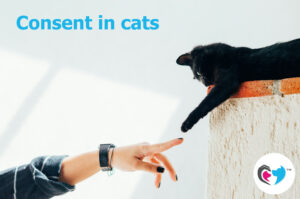We all know that our senior friends will need to be cared for in a different way, but do you know what is considered “old” when it comes to your pet?
According to the American Veterinary Medical Association it varies, but cats and small dogs are generally considered geriatric (old) at the age of 7[1]. Larger breed dogs tend to have shorter life spans and are considered geriatric when they are approximately 6 years of age. Owners tend to want to think of their pet’s age in human terms. While it is not as simple as “1 human year = X cat/dog years”, there are calculations that can help put a pet’s age in human terms:
| Cat years | Human years |
| 7 | 54 |
| 10 | 63 |
| 15 | 78 |
| 20 | 97 |
| Dog years | Dog size* | Human years |
| 7 | Small – medium | 44 – 47 |
| Large – very large | 50 – 56 | |
| 10 | Small – medium | 56 – 60 |
| Large – very large | 66 – 78 | |
| 15 | Small – medium | 76 – 83 |
| Large – very large | 93 – 115 | |
| 20 | Small – medium | 96 – 105 |
| Large | 120 |
*Small = 0 → 9kg (1 →20 lbs)
Medium = 9.5 → 22kg (21 → 50 lbs)
Large = 23 → 40kg (51 → 90lbs)
Very large = Over 40kg.(over 90 lbs)
The oldest recorded age of a cat is 34 years. The oldest recorded age of a dog is 29 years.
When it comes to caring for your old pet, here are some tips on getting it right:
- Regular check-ups.
As animals get older they are at higher risk of certain diseases like cancer, heart failure and liver/kidney problems. Make sure to visit your vet for regular check-ups so that any illness can be caught early and treated as best as possible. - Ask for a weight evaluation during each vet visit.
Keeping your pet at his ideal body weight is so much better for his aging joints. Ask your vet to check your pet’s body condition to determine whether your senior pet is overweight, underweight, or at an ideal body weight. Recent data, available from the Association for Pet Obesity Prevention, shows almost 53% of dogs as overweight or obese. Obesity decreases a pet’s life span, increases his risk for various cancers and metabolic diseases (like diabetes), and causes orthopaedic complications—just to name a few of the possible consequences. - Take care of your pet’s mouth.
As your pet ages his teeth may break or become coated with plaque, and he may even get gum disease. Taking care of your pet’s teeth is important, as dogs get older and their physical activity levels drop, being able to chew on raw bones or food dispensing toys becomes increasingly important. Make sure to have your pet’s teeth checked by the vet regularly and help keep teeth healthy by regularly brushing or giving dental treats and toys. - Good food
They say you are what you eat, and the same goes for your much loved pets. Choose a high-quality food that is appropriate for your pet’s age and lifestyle. Ask your vet if you are unsure, especially if Rex would benefit from being put on diet. - Keep walking
Just because your pet is getting old doesn’t mean he shouldn’t be exercised. In fact, most vets will encourage you to keep him moving (unless there is a medical reason not to) but to adjust your pace and the length of the exercise to suit his age. Regular exercise can help keep your older dog’s weight ideal and maintain healthy joints and muscles. If you have a senior dog who isn’t used to exercise start slowly and gradually increase the intensity — but only after you’ve consulted a veterinarian. If you think your pet may be in pain, consult your veterinarian about whether exercise is doing more harm that good. - Have some good toys.
If your oldie is starting to slow down, make sure to give him other things to keep him busy. Food puzzles, chew toys, treat dispensing toys and licky mats are all great for mental stimulation when your old boy isn’t up to walking as much as he used to. An old cat will enjoy catnip toys, chasing feathered wands and having a good scratching post. - Parasite control.
Your old pet still needs to be vaccinated and to received parasite control. In fact, it might even be more important for oldies because any disease can be much harder to fight for an older animal. Speak to your vet about the best schedule and type of parasite control. - Groom regularly
Older pets may have special grooming needs, especially in long haired dogs and cats.
More idle time lying about snoozing can lead to matting of hair and long nails in dogs. By grooming your pet more often you not only promote healthier hair, skin and nails, but it also creates an opportunity for bonding.
[1] https://www.avma.org/public/PetCare/Pages/Caring–for–an–Older–Pet–FAQs.aspx





